Ukraine Is Now Europe’s Bulwark Against Russian Aggression
Nolan Peterson /
KYIV, Ukraine—Thousands of Ukrainians marched through central Kyiv last week to celebrate the Day of the Defender, a holiday meant to honor the country’s veterans and active-duty soldiers.
The date, Oct. 14, also coincides with the anniversary of the founding of the Ukrainian Insurgent Army, a paramilitary fighting force that fought against both Nazi Germany and the Soviet Union in World War II.
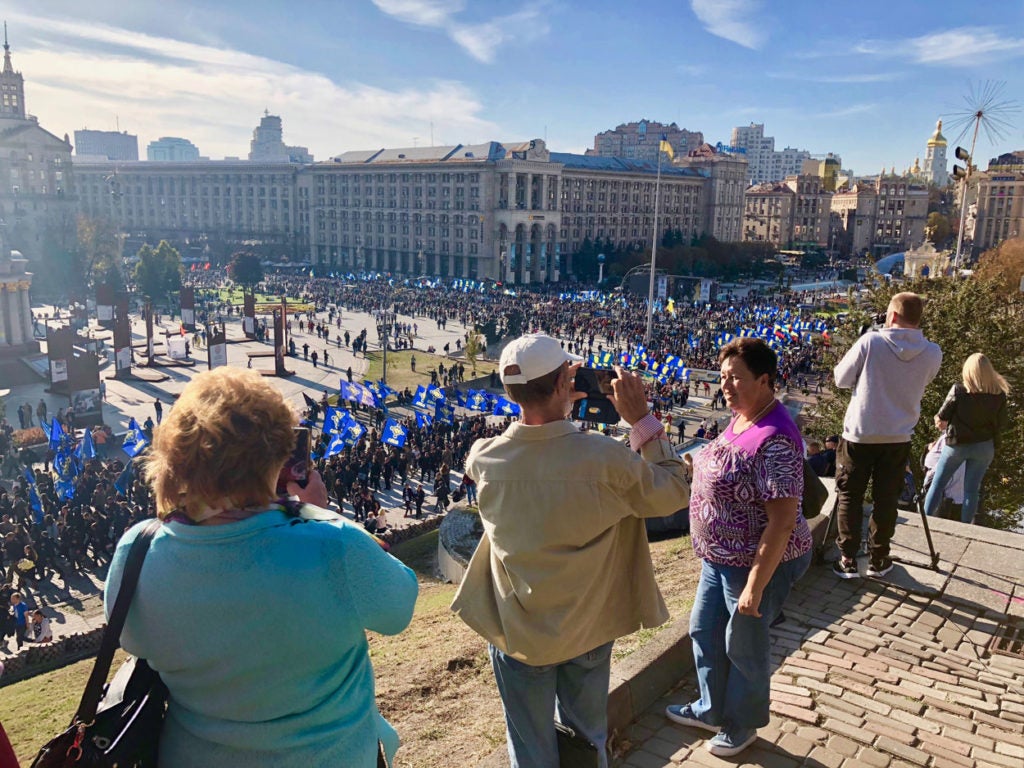
The marchers paraded through downtown to Kyiv’s central square, the Maidan, many of them war veterans, active-duty soldiers, and civilians. Some carried photographs of soldiers who died in combat. Others carried pictures of prisoners held by Russia.
The procession was divided into a long line of troupes made up of members of various nationalist groups.
Blue and yellow Ukrainian flags were ubiquitous. So, too, were the black and white flags of Ukraine’s World War II partisan forces. In some groups, someone out front carried their organization’s flag, leading the way as in a military formation.
The crowds’ chants underscored what was on their minds.
“Death to Moscow.”
“Heroes never die.”
And “No capitulation.”
This last was a reference to a controversial gambit by Ukrainian President Volodymyr Zelenskyy to make a major concession to Moscow for the sake of restarting peace talks to end the war in Ukraine’s eastern Donbas region that has lasted five and a half years.
The signs and banners carried by the protesters were equally as telling.
“Let’s protect our sovereignty,” one banner read.
“No legalization of Putin’s program,” declared another, referring to Russian President Vladimir Putin.
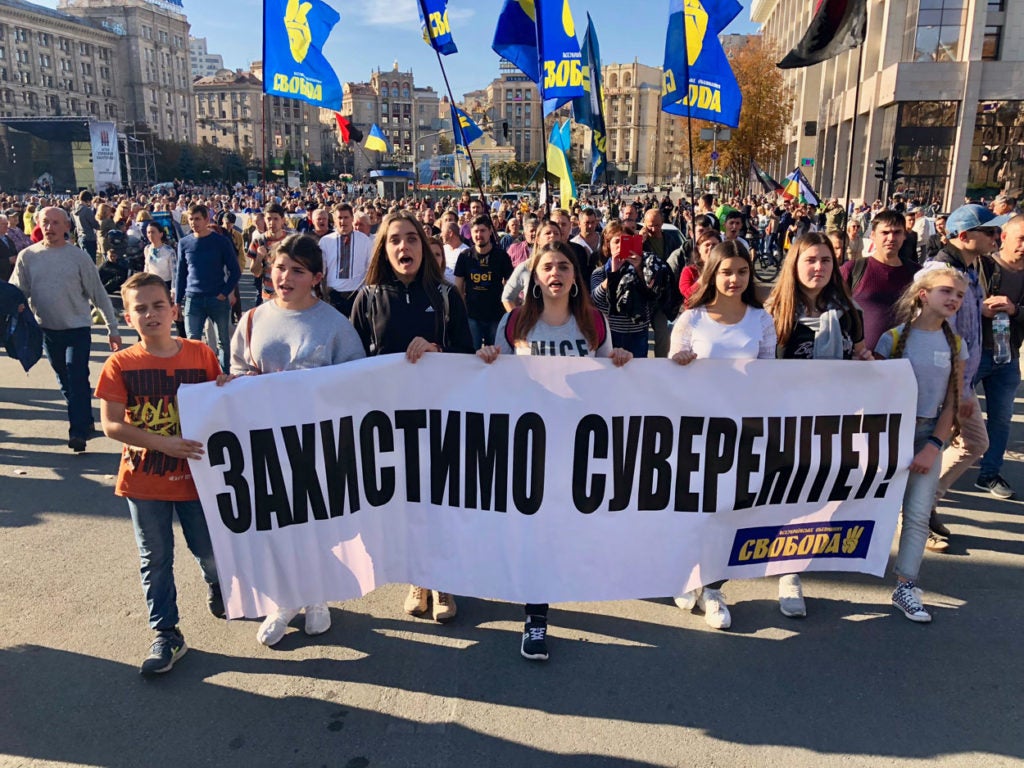
Once they reached the Maidan, the marching crowds turned up Heroes of the Heavenly Hundred Street, passing the spot where sniper fire felled scores of protesters during the final days of the pro-democratic revolution in 2014.
A monument now stands at that hallowed ground. Engraved in several metal sculptures are the names and faces of the roughly 100 protesters who died in the revolution—the “heavenly hundred.”
Nearby, bullet holes still pockmark light poles and a stone wall. They are subtle evidence of how quickly, even in a European capital, the veneer of civilization can disappear to reveal the undercurrents of violence lurking in the heart of human nature.
It’s often difficult to recognize the importance of historic changes as they are occurring. Yet, one couldn’t help but witness the Day of the Defender spectacle and come away with a feeling that history is now at an inflection point, the significance of which will be fully known only at the remove of time.
Since Russia’s 2014 invasion, Ukraine has rebuilt its military into the second-largest in Europe in terms of manpower, comprising about 250,000 active-duty personnel. On the Continent, only Moscow fields more uniformed soldiers.
As a newly self-sufficient, self-confident military power, Ukraine has become Europe’s bulwark against Russian aggression. Consequently, the region’s overall security picture today looks dramatically different than it did prior to 2014.
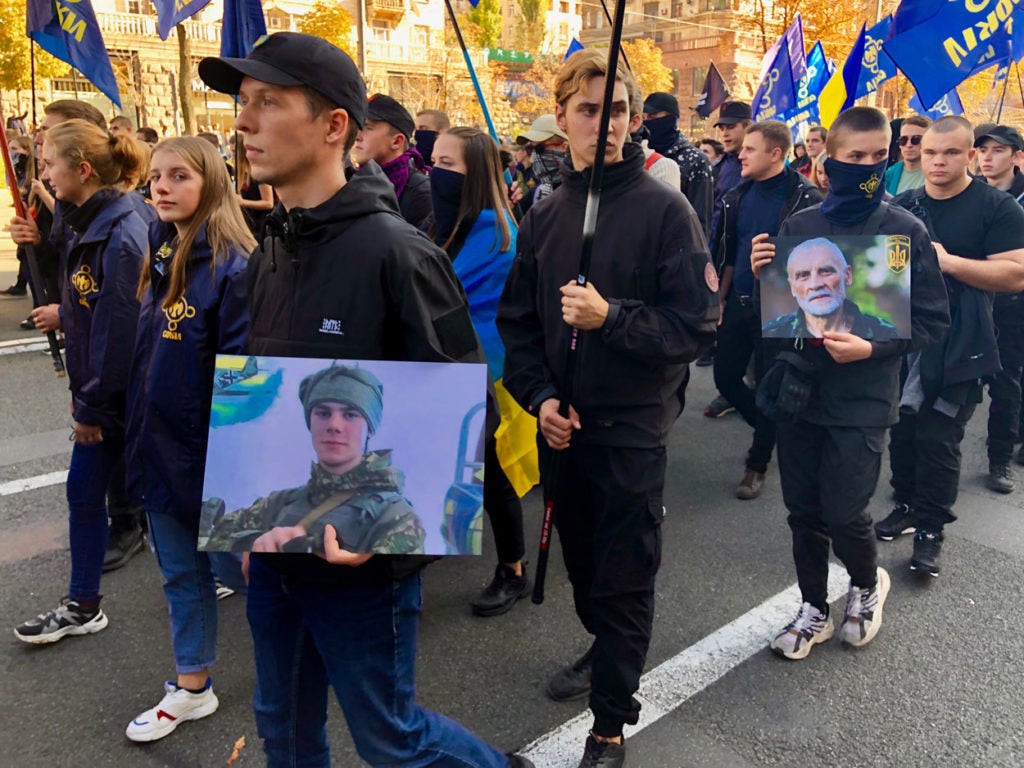
“The funding of the army over five years has increased significantly, and this gives reason to believe that in 10 years the Ukrainian army can enter the top five armies in Europe, and even the world,” said Sergiy Tsyhipa, a former Red Army soldier who volunteered for Ukraine’s armed forces in 2015 to serve in the Donbas war.
Russia’s military remains vastly superior to Ukraine’s in technology and sheer size. Yet, that matchup is on track to look significantly different a generation from now—especially if Ukraine finally taps into its potential to become an agricultural and industrial powerhouse.
Some wonder whether another European war is possible. In fact, Ukrainian and Russian soldiers are already dying in it. After five and a half years of combat and more than 13,000 dead, the question remains—when, and where, will this war end?
The Price of Peace
The demonstration of respect for soldiers and veterans Oct. 14 marked a historic change from Ukrainians’ generally indifferent attitude toward military service during most of the post-Soviet era.
“The army in Ukraine since 2014, when the Russian-Ukrainian war in the Donbas began, has become one of the most respected parts of Ukrainian society, second only to the church,” Tsyhipa told The Daily Signal.
Before 2014, military service was not highly regarded in Ukraine. It was seen by many as a fallback plan for young men with no other options in life.
Now, military service is a badge of honor. It’s not uncommon to see veterans still wearing items of military uniform with their civilian clothes. And across the country, veterans groups are spreading like wildfire.
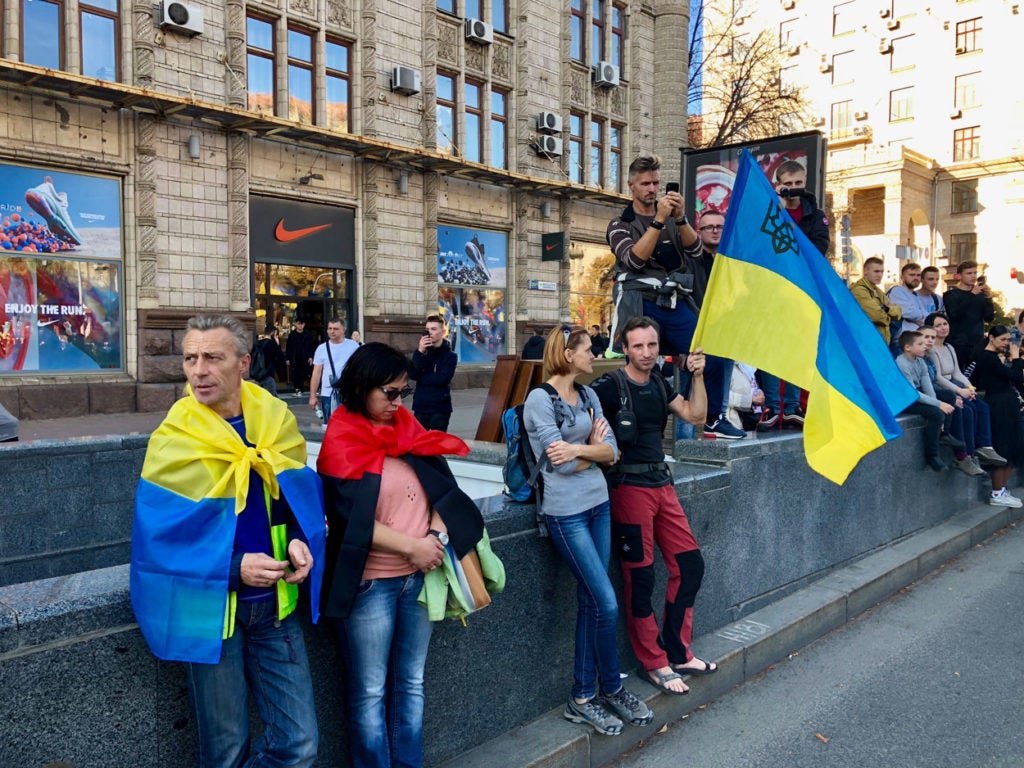
“Earlier, alcoholics, thieves, and losers served in the army,” said Yevhen Shevchenko, 36, a Ukrainian veteran who served in the war from 2014 to 2015 as a member of a volunteer battalion.
“Now, in the conditions of war, military service really has become a respected profession, because the military is protecting every Ukrainian,” Shevchenko said.
That evolution in thinking reflects a broader awakening of Ukrainians’ national pride, as well as a bolstered self-confidence in their country’s enduring independence from Russian overlordship. Ukrainians’ newfound pride in military service has also made them resistant to accepting any concessions to Moscow for the sake of peace in the Donbas.
Zelenskyy’s decision to accept the so-called Steinmeier Formula—a controversial measure to hold elections in the two self-proclaimed separatist territories in the Donbas—has sparked successive weekend protests across Ukraine. Amid the countrywide pushback Zelenskyy’s popular support has wavered, albeit modestly, dipping from 73% to 66%, according to a recent poll.
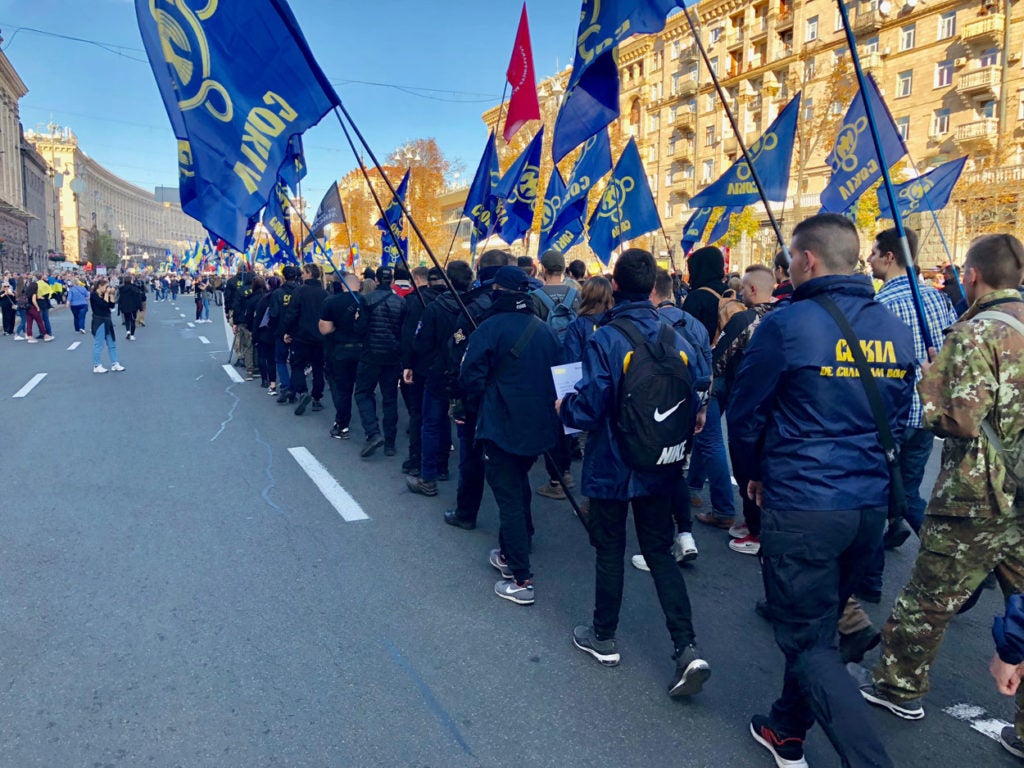
“Ukrainian society is somewhat alarmed by the statements of some ministers from the team of President Zelenskyy,” said Tsyhipa, the Red Army and Donbas war veteran.
Moscow has declared that Ukraine’s implementation of the Steinmeier Formula is a prerequisite for renewed peace talks. Zelenskyy, consequently, has been hard at work trying to sell his peace plan to a skeptical Ukrainian public—particularly, among the country’s veterans and volunteer soldiers.
“There will be many veterans and volunteers in the capital on October 14. I understand your concerns over the developments on the Donbas settlement. You justly don’t want what you fought for to be in vain,” Zelenskyy wrote on Facebook before the Day of the Defender holiday. “I promise you, as president of Ukraine and commander in chief of the armed forces, that I will never allow this.”
Volunteer Battalions
When Russian invaded in 2014, Ukraine was reportedly able to field only about 6,000 combat-ready troops. With Ukraine’s regular army on its heels at the war’s outset, everyday Ukrainians filled the ranks of irregular combat units and headed to the eastern front.
Harkening back to the legacy of partisan groups from World War II, these so-called volunteer battalions formed out of the remnants of protest groups active during the revolution.
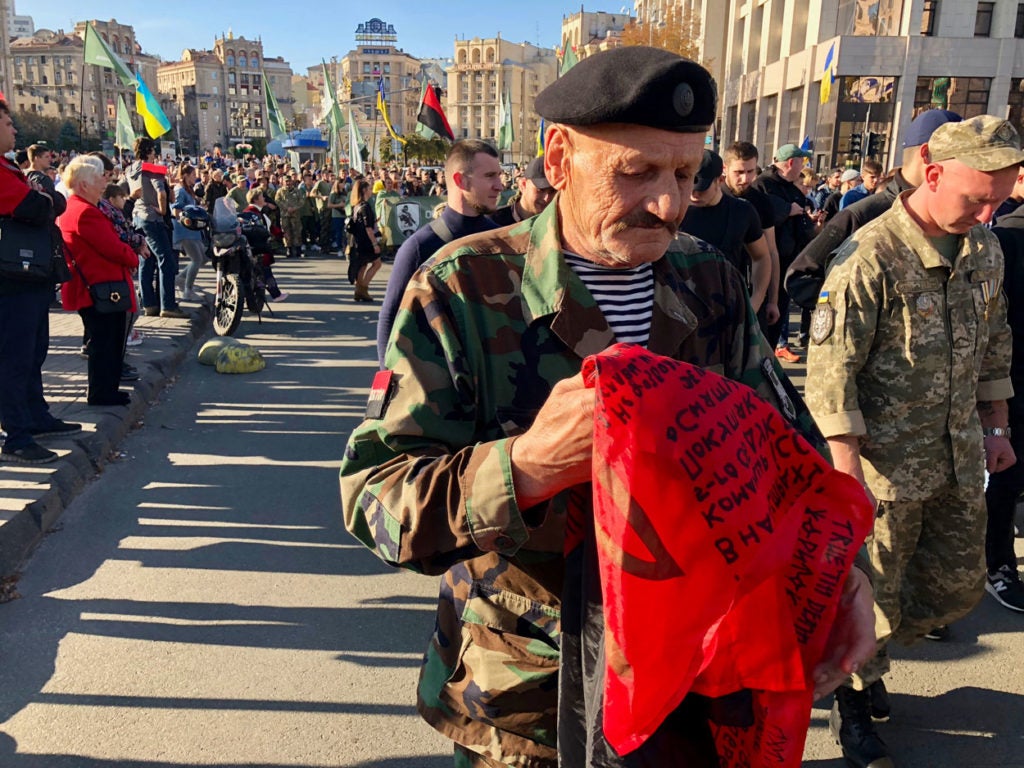
Initially armed with hand-me-down weapons from local police forces, the volunteer battalions stalled Russia’s hybrid warfare offensive. Just a few months into the war, Ukraine’s ragtag armed forces had retaken most of the ground previously lost to Russia and its separatist proxies.
It was a grassroots war effort, underscoring a widespread attitude of self-reliance among Ukrainian citizens who were unwilling to wait for the government to act in a moment of crisis. Ultimately, Ukraine’s cobbled-together military was able to thwart the combined Russian-separatist advance at several key places, including the battle for Mariupol.
With its hybrid war operation in shambles, Russia invaded with thousands of its own troops in August 2014, turning the conflict into a conventional war. Ukraine ultimately fought the war to a stalemate, which was enshrined by two successive cease-fires. Nominally, the February 2015 cease-fire, known as Minsk II, remains operative, although daily fighting continues.
Most of the volunteer battalions have been incorporated into Ukraine’s National Guard and are under centralized military command. Some groups have morphed into political parties. Yet their legacy has done much to ignite a patriotic movement across Ukraine.
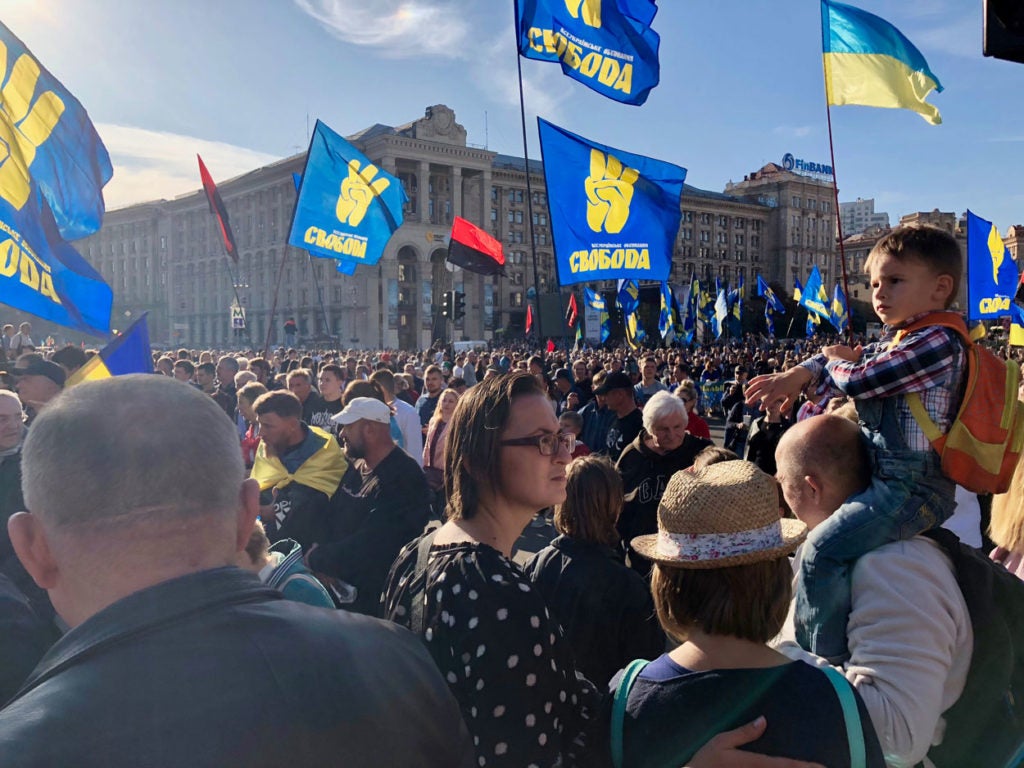
Today, many Ukrainians proudly credit the volunteer battalions with turning the tide of war and fundamentally reshaping the Kremlin’s strategic objectives in Ukraine.
“Volunteers went to war directly from the Maidan, and their appearance markedly strengthened the patriotic mood in the army,” Tsyhipa said, using a colloquial name for the 2014 revolution.
A Quarantined War
After five and a half years of constant combat, Ukraine’s military continues to fight a static, trench war against a combined force of pro-Russian separatists, foreign mercenaries, and Russian regulars.
It’s become a long-range battle not unlike World War I trench warfare (albeit on a much smaller scale) in which soldiers hardly ever see at whom they’re shooting. At some places, no man’s land can be several kilometers wide. At others, the Ukrainians and their enemies are close enough to shout insults at each other.
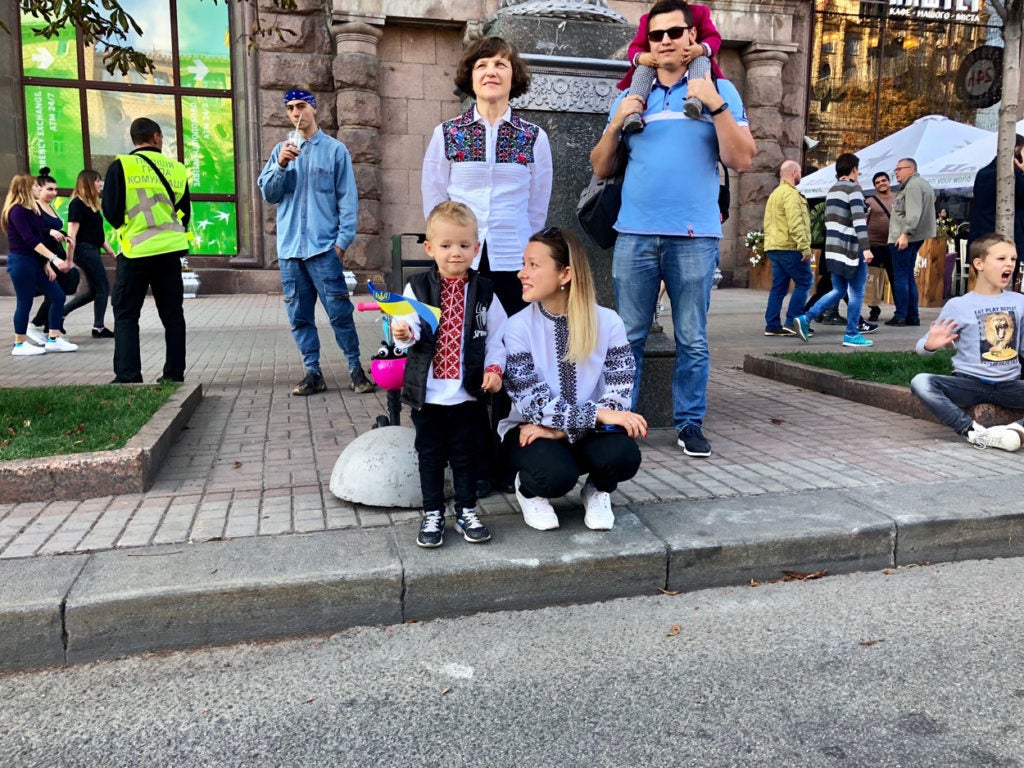
The Minsk II cease-fire has frozen the conflict geographically along a static front line and moderated its violence by proscribing the use of heavy weapons. But the war never ended and the cease-fire’s rules are broken on a daily basis.
Of the war’s more than 13,000 dead, more than half died after Minsk II went into effect. Ukrainian troops are still dying at roughly the rate of one every three days. And civilians are still occasionally killed, too. most often by landmines.
According to Kyiv, combined Russian separatist forces violated the cease-fire 21 times Oct. 14, using 120 mm and 82 mm mortars, as well as grenade launchers and small arms. One Ukrainian soldier was wounded.
The next day, enemy snipers killed two Ukrainian soldiers.
The war is at an impasse. Combat has become a daily rhythm of artillery exchanges and sniper duals. Absent is the use of airpower in any significant way. And neither side is fighting to affect a breakthrough or take new ground. Basically, both sides weather daily shelling and sniper fire for the sake of not backing down first.
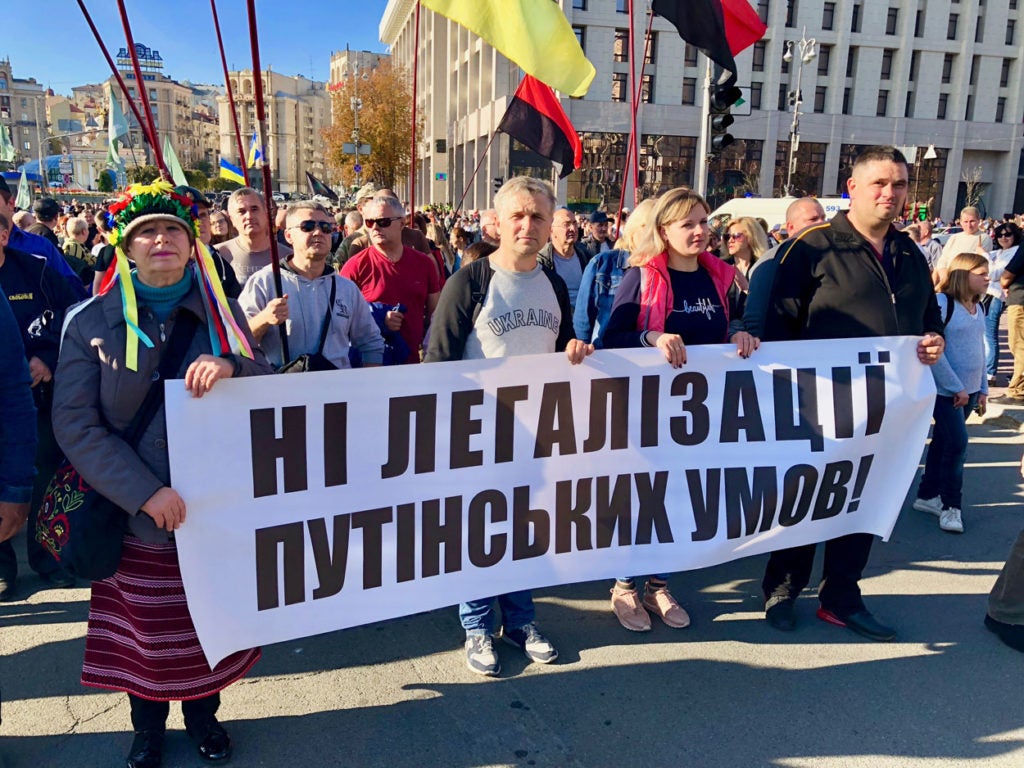
To an outsider, it may seem like an absurd conflict fought for no good reason. But most Ukrainian soldiers out in the trenches will tell you that if they simply turned around and went home, then Russia’s forces likely would invade behind them all the way to Kyiv. From the Ukrainians’ point of view, the war’s objective is clear. Their country was invaded, and they have to fight until all the invaders are gone.
On the other hand, many Ukrainian troops and veterans also admit that there is no military solution to the war.
A military offensive to take back the Donbas would result in widespread death and destruction, and also would likely spur the roughly 80,000 Russian troops deployed near Ukraine’s eastern border to outright invade—perhaps even with their patches on.
The physical effects of combat are quarantined geographically to the Donbas front lines, reaching only as far as the range of the weapons used. In Ukraine, the war is a destination. Once you’re at it, you’re in it.
For that reason, the war is an unequally shared burden in Ukrainian society—the soldiers fight and die in it, while most of the rest of the country goes on about their normal lives. It can leave Ukrainian troops’ heads spinning to have breakfast under artillery fire in the Donbas and be back in Kyiv eating a McDonald’s hamburger by dinnertime.
The war, too, has been somewhat of a control rod, moderating the pace of Ukraine’s post-revolutionary democratic reforms.
In the months following the revolution, many Ukrainian protesters redirected their efforts into mounting a grassroots war effort rather than following through on the promise of the revolution by pushing through anti-corruption reforms.
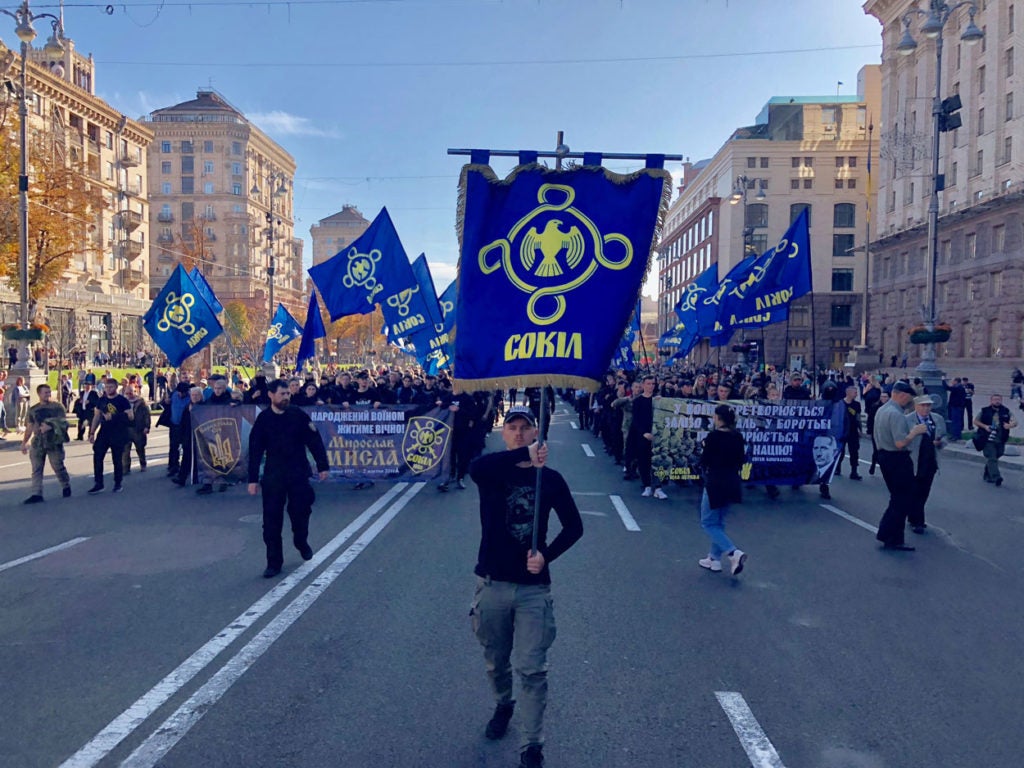
However, Ukraine is now making up for lost time. The crisis of 2014 is long over, and that grassroots defense mindset that saved Ukraine in 2014 has morphed into a civil society reformation. Many young activists who once stared down Russian tanks with hand-me-down weapons have transitioned to another battle—the one against corruption.
Also, in the past five and a half years and while fighting a war, Ukraine has rebuilt its armed forces, far surpassing the immediate needs of the war in the Donbas in the process.
The country’s strategic military doctrine now identifies Russia as the country’s top security threat. Resultantly, Kyiv is rebuilding its military with the specific objective of defending against a full-blown Russian invasion and adopting NATO standards.
“Yes, the army is changing; new ultramodern types of weapons are appearing,” said Shevchenko, the volunteer battalion veteran.
“In general, Ukraine’s military strategy is moving to completely transfer our army to NATO standards,” Shevchenko said.
To that end, on Oct. 17 Ukraine’s parliament passed a sweeping bill to bring the armed forces’ chain of command in line with NATO norms. Notably, the measure creates a corps of noncommissioned officers modeled on the U.S. military’s enlisted ranks.
Epic Fail
Ukraine’s regular military is no longer a potential walkover for Russia. Moreover, the civilian partisan mentality, a legacy of World War II, is still very much part of Ukraine’s societal fabric.
Across the country, civilians regularly meet on the weekends for military training. They make up a network of partisan forces called territorial defense battalions. These irregular units can be rapidly mobilized, and promise a protracted guerrilla conflict should Russia invade again.
In 2014, the Kremlin’s strategists may have feared the arrival of a pro-European Union, pro-NATO Ukraine on its border. Today, the situation is much worse than that, from Moscow’s perspective.
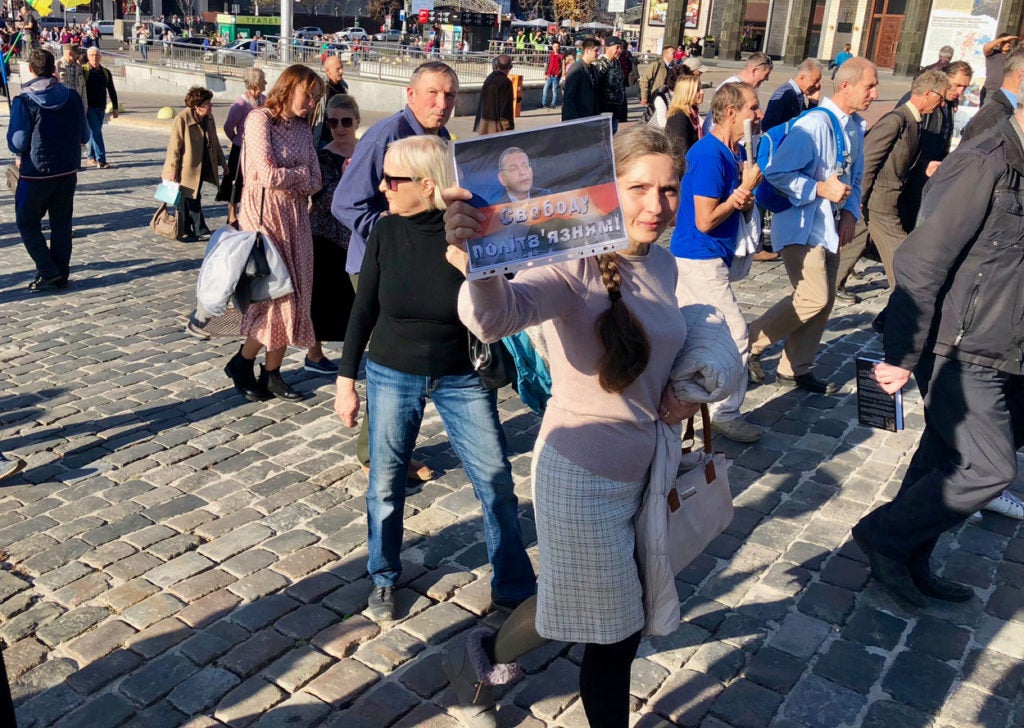
Not only is Ukraine now firmly set on an irreversible pro-Western trajectory, but the country has a battle-tested, rapidly strengthening military, as well as a self-confident and patriotic citizenry that has proven its grit in sustaining a grassroots war effort.
By those measures, Russia’s 2014 invasion has backfired.
“The presence of an external enemy has rallied the country and patriotism has reached a new qualitative level,” Shevchenko told The Daily Signal.
Ukrainian troops have been hardened by war. At various times, they’ve fought a mobile mechanized war, a grinding trench conflict, and successfully reversed Russia’s hybrid warfare offensive in the Donbas in the summer of 2014.
“Ukraine survived in 2014 due to the patriotism of volunteer guards and the volunteer movement,” said Alexander Levitskyi, 54, a veteran of the war in the Donbas.
“Since then, the army has become much stronger,” Levitskyi added. “But it remains weak in terms of providing new types of weapons and equipment. We need reforms in the armed forces.”
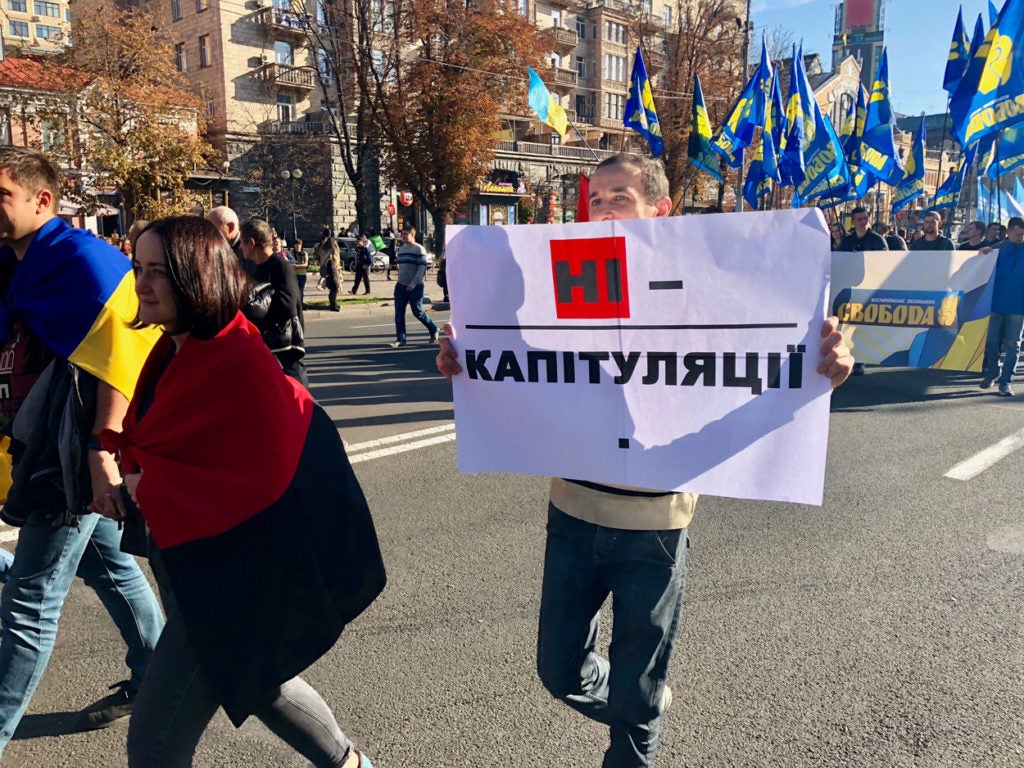
U.S. military aid has improved the survivability of Ukraine’s armed forces, and allowed them to fight with more precise, limited means, without relying on Soviet-era area-warfare tactics, thereby reducing the risk of collateral damage.
Also, and no less importantly, American aid sends a deterrent message to Moscow and boosts the morale of Ukraine’s soldiers and civilians—particularly with the delivery of lethal weapons systems such as the vaunted Javelin anti-tank missile.
In the long run, U.S. military aid also helps Ukraine to achieve its overarching ambition of fielding a combined military force that can resist a Russian invasion.
Ukrainian troops have had their baptism by fire at the hands of Russian artillery barrages, rocket attacks, and hybrid warfare tactics. Thus, Ukraine’s armed forces possess something America’s armed forces don’t have—five and a half years of combat experience against modern Russian tactics and technologies.
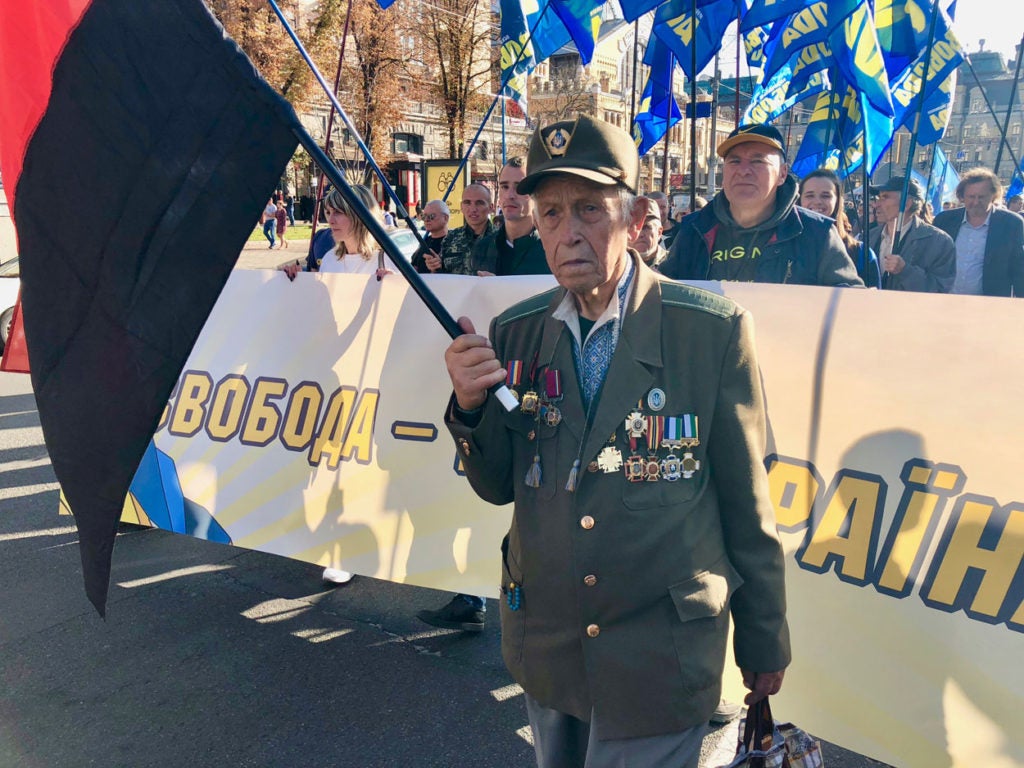
A common refrain among Ukraine’s soldiers and veterans is that they’re perfectly capable of fighting their own war. For that reason, they see U.S. support as a luxury, not a necessity. After all, it was the bravery of Ukrainian troops, not U.S. military aid, which saved the country from disaster in 2014.
“Wars aren’t being won by surrendering,” said Denys Antipov, 30, a Ukrainian army veteran of the war in the Donbas.
“You have to fight,” Antipov told The Daily Signal. “If you don’t fight, you won’t be supported by anyone. Because it’s your own freedom, and you have to fight for it.”
